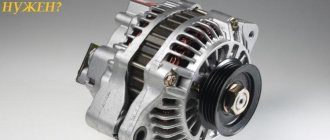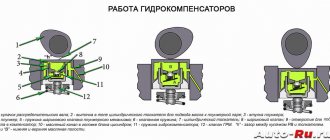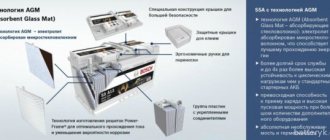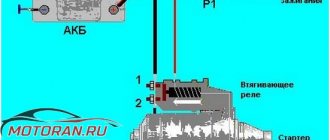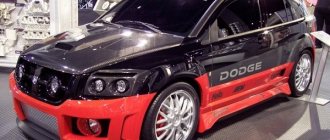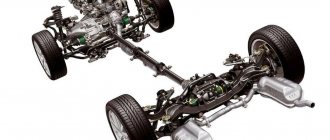Every car enthusiast wants to be the owner of a fast, high-quality, practical and modern car. Nowadays, a car has ceased to be a luxury and just a means of transportation. Now it is a faithful “iron horse”, reflecting the status of the owner and his desire to keep up with the times. Therefore, 3-4 years after purchasing a new car, the need arises to change the vehicle or make changes to the appearance and technical equipment.
Many car enthusiasts, when visiting automotive websites, come across the expression “restyling” . Using logic and basic knowledge of the English language, you can guess that we are talking about changing the style of the car. But what is it really? What aspects of technology are affected during restyling?
Along with the expression “restyling”, “facelift” and “redesign”, “tuning” are often used. Essentially, all these expressions describe the same actions with a car. Why do manufacturers and consumers need restyling? This will be discussed in the article.
The expression “restyling” is often used in marketing when it comes to minor modernization or renovation of a brand. If we talk about the car market, then a restyled car is a unit that has undergone minor changes in the interior and exterior.
Automotive market and restyling
The automobile market is one of the most highly competitive in the economic environment. A large number of automobile companies are fighting for the attention and brand loyalty of consumers.
Today, the market is experiencing trends of rapid development and change in technology, continuity - most often expressed in simply copying exclusive design solutions from competitors, dumping - by reducing labor costs and increasing the number of equipment sold - Asian brands are capturing a large market share, reducing cost of goods.
It is no longer a secret that more than 75 percent of manufacturers copy design features from each other. How can you differentiate yourself from competitors and keep your car relevant? This is a question that concerns concerns all over the world.
After all, bringing a new generation car to the market requires considerable material and technical resources and attracting investments, which is costly for holding companies. In addition, it should be understood that all investments in creating a car of the next generation simply physically cannot be compensated by sales within 3 years - the payback cycle is longer. And here, as a solution, restyling is optimal.
Car restyling is usually carried out every 3-4 years. This allows you to attract the attention of consumers to the model without significant costs. Thus, in essence, this is an advertising marketing ploy. Therefore, from an economic point of view, restyling is the optimal tool for automobile concerns to survive in a complex and multifactorial market, maintain positions or expand their zone of influence.
Restyling also provides an opportunity to launch a rebranding of the brand, since by improving the car, the target consumer segment of the market expands, the possibility of growing the customer base increases and the company’s positioning changes.
Types of restyling
There are several different types of restyling, depending on the elements that undergo changes:
- External restyling makes changes to the design of the car. For example, bumpers, radiator grilles, headlights or wheels are modified.
- Internal restyling complements the car's interior, adds new elements or eliminates old defects.
Depending on the conditions under which the car is restyled, it can be divided into two categories.
Unscheduled restyling is used if a new car model has obvious flaws. Also, unscheduled restyling can be used if potential buyers are dissatisfied with the released model, and then it goes away for revision.
Planned restyling. Most often it happens when a model released 3-4 years ago stops selling. The adjustments made by restyling make it more modern in appearance
Then the automaker returns the modified version to the market, where, according to the idea, the buyer should pay attention to it, and sales of the model will increase again
What's changing
Appearance
- The simplest option is to change the car's paint color or apply airbrushing . To enhance the stylization, choose bright, non-standard colors and shades.
- The changes mainly concern the front of the car . When tuning, the optics are changed, tinted or provided with non-standard lighting options. When replacing optics, a facelift involves installing halogen or xenon headlights and fog elements.
- Metal parts of a machine are replaced to improve performance or design.
- The external body kit of a car can also be subject to redesign: installing new bumpers and spoilers, installing a radiator grille or chrome-plating its edging, updating the car's wings, a new hood shape - all these are variations of restyling.
- Among car enthusiasts, the most common replacement is the bumper . This is due to several factors. Firstly, the bumper is one of the most vulnerable parts of the car, which suffers more often than others in accidents and collisions. Secondly, experienced car enthusiasts know that changes to the bumper improve aerodynamics and maneuverability by redirecting air flow.
- Trunk trunks, hatches, and exhaust pipes are also often subject to modernization . The car body remains unchanged.
- In some cases doors are changed , but this is also problematic due to the replacement of fasteners and changes to the body structure. In such cases, they already talk about deep restyling.
- During a facelift the wheels , their paint is changed, and they are styled according to fashionable auto trends.
Changes to the interior of the cabin.
- The interior of the cabin may also undergo minor changes. Replacing chrome parts with wooden ones, changing the design of buttons, changing the material of seat trim, headrests, and armrests. Replacing head restraints not only improves the adaptability of passengers and the driver, but also increases the degree of safety in emergency situations. For the sake of interior ergonomics, the location and size of the seats, the placement of buttons and other vehicle control tools can be changed. All this is done to provide a higher degree of comfort for users of any body size, without going beyond the dimensions and without changing the size of the car itself and its body.
- The air conditioning and climate control system are also subject to redesign and optimization to improve the convenience of motorists. Technologies are constantly evolving, and in order to keep up with them and establish themselves as a mobile manufacturer that catches up or is ahead of market trends, concerns are updating old models, while avoiding budget overruns.
- The audio system and sound insulation of the car are also part of the restyling process. You can install a new sound insulation kit either at a car dealership or yourself, following the instructions on the Internet.
Content
- Ford Kuga II (before restyling)
- KIA Sportage III
- Toyota RAV 4 III (XA30)
- KIA Optima III
- Honda Accord VIII (facelift)
- Mazda 6 III (GJ) before restyling
- Ford Mondeo V
New is not always better than old. This statement also applies to the automotive market. On the secondary market there are a lot of copies that can give odds to new cars. Taking the average price tag of 900 thousand rubles as a basis, we selected seven such cars. These are reliable, beautiful, well-equipped cars for every taste.
We also found out the pros and cons of cars and found out what technical and legal problems they may face when selling on the used market, because buying a used car is always associated with risks.
What doesn't change
- the electronics and dashboard are not affected , since this is costly for manufacturers and requires additional engineering work and line reconfiguration. In rare cases, the dashboard does change, but then we are talking about deep restyling.
- The chassis, body (structure) is something that never changes when restyling a car. Although in some cases the length of the car body may change insignificantly, due to additional parts used by manufacturers or consumers themselves when modifying the car.
If we talk about “deep restyling”, then there are changes in the power plant, braking system and suspension modifications, but this is more the exception than the rule.
Ford Kuga II (before restyling)
For 800 thousand rubles you can buy a 2014 Kuga in very good condition and with a mileage of up to 100 thousand km. You will get plug-in all-wheel drive, a modern interior and exterior, a fairly strong suspension and a reliable engine. The choice will be between gasoline (1.6 liters with 182 hp and 2.5 liters with 150 hp) and diesel (2 liters, 140 hp) engines.
The package may include seven airbags, an automatic braking system, a parking assistant, blind spot monitoring, tire pressure monitoring and much more.
The owners of the Kuga include the “robot” with its always “snotty” clutch, decent consumption in the city (for a gasoline engine) and a small trunk.
Through avtocod.ru, Ford Kuga II has been checked 5,941 times over the past three months. Most of the cars had an accident and repair work was calculated. Single copies were listed as leased and pledged.
Also read: Toyota RAV4 vs Ford Kuga. What's better?
The advantages of restyling for the manufacturer and the buyer
For the manufacturer, in addition to increasing the number of sales of updated cars, restyling is also good because it makes it possible to correct shortcomings in the prototype that were noted and criticized by the consumer. It happens that small errors in the development of new generation cars reduce its functionality and comfort. In such cases, eliminating these nuances and presenting benefits to potential buyers helps improve the sales situation.
Most buyers treat their “iron horses” with trepidation and reverence. As a rule, a restyled car costs only $300 more than a standard model, depending on the brand and feature set. Thus, it is possible, within a small budget, to introduce changes that will allow you to stand out from the stream of identical production cars, improving not only the appearance of the car and comfort, but also safety.
Updating accessories and the emergence of new products that allow you to update the appearance of the car and extend its service life are perceived with enthusiasm by car enthusiasts. Updated spare parts can be purchased on the manufacturer’s websites and stores, you can update your car at the dealership or on your own. As a rule, independent restyling is not difficult for the consumer, since all spare parts are adapted and fit perfectly in terms of fastenings. The make of the car is not critical. Restyled parts for all brands appear on the market immediately after the model has undergone a facelift.
Thus, having understood the concept of restyling, we can conclude that it is beneficial to both manufacturers and car owners. In essence, this is a budget method that allows you to extend the life of a car, improve its standard characteristics and aesthetic external qualities without increased costs and investments. For sellers, this is an excellent and time-tested marketing ploy. For the buyer - the opportunity to optimize the vehicle according to the needs of the soul, fashion trends and the strength of the desire to stand out from the crowd, attracting public attention.
Each car owner has the right to choose exactly how to improve and modernize his vehicle. Manufacturers actively help consumers in this process. The main rule in restyling is not to go too far, not to overdo it with new products and technical know-how. Because in this case, changes initially intended as positive can lead to the opposite result. And instead of an updated, modernized unit with interesting design solutions, you can end up with an undoubtedly shocking machine that is not suitable for use.
It is best to entrust the work of redesigning a car to professional craftsmen in service centers. This depends on the complexity of replacing car parts and their impact on the safety of the owner and pedestrians. Mistakes made when installing a new alarm system, for example, can make the “iron horse” an easy prey for robbers and car thieves. Therefore, when restyling yourself, it is important to rely on the opinion of professionals and common sense.
The importance of restyling in the modern automotive world should not be underestimated. After all, in addition to all the advantages described above, this is also an opportunity to purchase your favorite model in a corrected and improved version.
Types of car restyling
Restyling is divided into several types. Highlight:
- External restyling
. In this case, the modifications concern only the exterior of the car. Car owners usually limit themselves to repainting the body and changing the design of the wheel rims. - Internal restyling
. This type requires more serious work, because the main emphasis is on improving the interior of the car. In most cases, the modification concerns the correction of errors and shortcomings made during the release of the model.
There is another classification of car modifications:
- Planned restyling
. The need for it arises in cases where the car has been on the market for too long. Its appearance is losing relevance, but technical data still satisfies most of the needs of car owners. Therefore, companies change the appearance of the model and the interior of its cabin. Planned restyling is usually carried out after about three years of the car’s existence on the market. - Unscheduled restyling
. The manufacturer is forced to do such work if the car he has produced has serious defects that repel the buyer. Then the company begins to adapt to the wishes of customers and tries to implement them when modifying the car.
Mazda 6 III (GJ) before restyling
The “Six” is perfect for young people who will use it in the city. Here it will consume about 10 liters of fuel. The equipment includes six airbags, dual-zone climate control, a photochromic mirror, a 7-inch touchpad, a rain and light sensor, ventilation deflectors for rear passengers, Bluetooth, an adaptive lighting system and much more.
There are minor shortcomings in the Mazda's interior: a narrow door and non-adjustable center armrests, as well as a non-raising passenger seat.
Among the disadvantages I would also include poor sound insulation and inflated prices for new parts. For example, the front shock absorber on a Mazda 6 costs 8,490 rubles, and on a Ford Mondeo, for comparison, it costs 5,900 rubles. Scheduled maintenance with replacement of oils, filters and brake pads will cost the owner of a Matryoshka 20 thousand rubles, and the owner of a Ford 14 thousand rubles.
In terms of the number of checks through avtocod.ru, the “six” is ahead of all other Mazdas. Over the past three months, it has been struck 17,663 times. Most of the cars were broken, some of the copies had traffic police restrictions, incorrect mileage and a taxi driver's past.
Also read: Zoom-zoom? Review of Mazda 6 II (GH)
Why don't they release a new generation every 3 years?
The problem is that each new generation requires significant investment and cost changes. The funds spent must be recouped during the production and sales cycle. However, even a very successful model will not be able to get the required profit in 3 years. Therefore, manufacturers prefer not to invest a lot of money in the development and production of a new generation every 3 years, but only update the appearance of the vehicle.
Traditionally, restyling affects body parts, optics and body kit. 3 years after the release of the new generation, manufacturers are trying to refresh the bumper, hood, front fenders, optics and radiator grille at the front, as well as optics, trunk lid, rear bumper and exhaust pipes at the rear of the car. Moreover, the new elements have the same attachment points as those that existed before the restyling.
In rare cases, a facelift may affect the doors of a vehicle. However, this does not happen often, since the change usually requires modification of the door structure, which carries significant costs.
Minor changes may also affect the interior of the car. They usually affect the interior trim and center console. In rare cases, developers can add new electronic technologies, update the firmware of information systems, install new sensors and a more modern navigation system.
The stylistic side of the issue
Restyling is, first of all, an attempt to make the appearance of a car more modern and thereby change the perception of an already familiar model. What changes to the exterior and interior of the car can there be? Absolutely any - sometimes designers limit themselves to a delicate “facelift”, and in other cases they go to great lengths, boldly reshaping the body and interior of the car. An example of a moderate restyling is the second generation Volvo S80, which the company updated selectively and with a sense of proportion. First, the designers went through the exterior, and a little later they remembered the interior, and it was updated more significantly than the body.
KIA Sportage III
The owners praise the Sportage for its spacious interior, torquey engine (2 liters, 150 hp), and also for its security system. A practical, robust car starts without problems in cold weather and is perfect for Russian roads.
The basic version will have heated front and rear seats, mirrors and windshield, a fairly good audio system and electric power steering. And if you get a car with a leather interior, the seats will be ventilated! No new car in this price category can boast of this!
Among the shortcomings of the Sportage, like almost all KIA cars, are the weak paintwork and inexpensive materials in the interior trim, which wore out after driving over 100 thousand km.
Through avtocod.ru, KIA Sportage has been checked 17,265 times over the past 90 days. Every second crossover had no problems. Every second car had an accident, every sixth had unpaid fines. There were also examples after a taxi or with traffic police restrictions.
Also read: Almost ideal: review of the KIA Sportage III generation
Honda Accord VIII (facelift)
The interior of the Accord is very stylish, making it a pleasure to be in the cabin. The dashboard is very informative and concise. The seats are comfortable, with lateral support and a wide range of adjustments. Large rear view mirrors provide good visibility.
The basic equipment of the Accord VIII includes electric windows and mirrors, a dual-zone climate control system, central locking and a high-quality audio system.
Under the hood there may be a 2.0 liter (156 hp) or 2.5 liter (200 hp) petrol engine. The version with a two-liter engine is not able to satisfy the “driving” needs of some drivers. But the 2.5-liter version, especially in combination with a manual transmission, accelerates to 100 km/h in just 7.9 seconds.
Among the disadvantages of the Honda Accord, I would highlight frequent failures of the steering racks and frequent breakdowns of the VTS clutch, which is responsible for gas distribution. In general, most problems are insignificant and can be solved with little expense.
In the secondary market, according to statistics from avtocod.ru, most of the “Accords” are sold with the calculation of repair work. A third of the cars are offered with accidents and fines, a quarter have incorrect mileage or have traffic police restrictions. Single copies are sold after taxi.
Also read: What captivates and upsets the Honda Accord VIII
What is restyling
It’s worth starting to study the topic with the definition of a restyling car.
This concept hides changes in the appearance of the car. The changes affect not only the optical elements and parts of the external body kit, although this is where restyling most often occurs. The metal elements of the body are also subject to changes. There are several types of facelift:
- external implies changes to the exterior (painting, wheel design);
- internal affects the interior and often allows the manufacturer to change mistakes made in ergonomic calculations;
- unscheduled is carried out in cases where significant defects were discovered in the released car or the audience showed dissatisfaction with the new product;
- planned is necessary to give the car relevance, which was lost after several years of production.
In any case, this modified model is not new. After all, the technical content and basic elements of architecture remain unchanged. What does restyling a car mean? we figured it out and everyone already has a broader understanding of this phenomenon. There is a lot of interesting things ahead that we will have to deal with.
